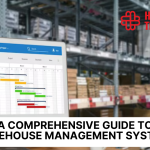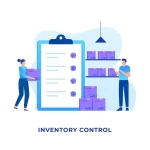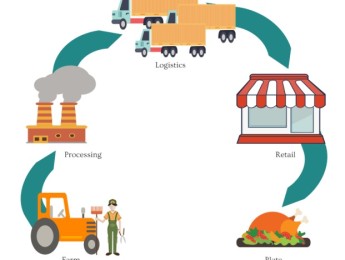- Table of Contents
- Introduction
- What Is Warehouse Management?
- The Growing Complexity of Supply Chains
- Key Performance Indicators (KPIs) in Warehousing
- 1. Inventory Accuracy
- 2. Order Picking Accuracy
- 3. Order Cycle Time
- 4. Warehouse Space Utilization
- 5. Labor Productivity
- The Cost of Poor Warehouse Management
- Trends Shaping the Future of Warehousing
- 1. Automation
- 2. Robotics
- 3. Artificial Intelligence (AI)
- 4. Sustainability
- How This Guide Can Help
- Top 10 Warehouse Management Challenges & Solutions
- 1. Inventory Inaccuracy
- 2. Inefficient Warehouse Layout
- 3. Poor Demand Forecasting
- 4. Labor Shortages and Training Gaps
- 5. Ineffective Picking Processes
- 6. Lack of Real-Time Visibility
- 7. High Operational Costs
- 8. Space Utilization Issues
- 9. Returns Management (Reverse Logistics)
- 10. Lack of Integration with Other Systems
- Summary Table: Warehouse Challenges and Solutions
- Conclusion
Introduction
Warehouse management is a critical function in the supply chain that directly impacts business efficiency, customer satisfaction, and profitability. With the rapid growth of e-commerce, globalization, and increasing customer expectations, warehouses are under more pressure than ever to operate at peak efficiency. Companies must balance inventory control, order accuracy, labor management, and space utilization—all while minimizing costs. Failing to manage these elements effectively can lead to delays, customer dissatisfaction, and financial losses. In this article, we will explore the fundamentals of warehouse management, its importance, modern challenges, key performance indicators, future trends, and finally, provide detailed insights into the top 10 warehouse management challenges along with their practical solutions.
What Is Warehouse Management?
Warehouse management refers to the process of overseeing the storage, movement, and tracking of goods within a warehouse. It includes a range of activities such as inventory management, order fulfillment, shipping, receiving, and layout optimisation. The goal is to ensure that products are stored efficiently and are accessible when needed, thus supporting the overall logistics and supply chain strategy.
A well-functioning warehouse ensures that goods are delivered to customers accurately and on time. It serves as a central hub in the supply chain, connecting suppliers, manufacturers, and end-users. Warehouse management also involves the use of specialized systems known as Warehouse Management Systems (WMS), which help automate processes, improve accuracy, and provide real-time visibility into inventory levels.
Warehouse efficiency is not just a logistical goal—it’s a business imperative. An efficient warehouse can process orders faster, reduce labor costs, minimize waste, and improve inventory accuracy. These elements contribute to higher customer satisfaction, better cash flow, and increased profitability.
When warehouses operate efficiently, they can meet delivery deadlines, reduce stockouts or overstock situations, and maintain a smooth flow of goods. This directly impacts the customer experience, especially in industries where timely delivery is crucial, such as retail and healthcare.
Moreover, efficiency leads to better space utilization, which means lower storage costs and the ability to handle more products without the need to expand facilities. It also reduces the reliance on emergency fixes or last-minute shipments, which are often costly.
Ultimately, warehouse efficiency is a competitive advantage. In today’s fast-paced market, companies that streamline their warehouse operations are better positioned to scale and respond to market demands quickly.
The Growing Complexity of Supply Chains
Today’s supply chains are more complex than ever. Global sourcing, multi-channel retailing, rapid product life cycles, and heightened customer expectations have transformed traditional supply chain models into dynamic, multifaceted networks.
One of the primary drivers of this complexity is globalization. Companies now source raw materials and products from different parts of the world, which increases the need for real-time communication, longer lead times, and advanced logistics coordination. Warehouses must be prepared to receive goods from international suppliers and redistribute them across diverse markets.
Another factor is the rise of e-commerce and omnichannel fulfillment. Customers expect fast, flexible delivery options, and companies are forced to manage inventory across multiple channels—brick-and-mortar stores, websites, mobile apps, and third-party platforms. This requires warehouses to be agile and responsive to changes in demand.
Technological advancements also play a role. While they offer tools to manage supply chains more effectively, they also require significant investments and training. Warehouse staff must be adept at using warehouse management systems, robotics, and automated solutions.
Furthermore, external risks such as political instability, environmental disruptions, and pandemics like COVID-19 have exposed vulnerabilities in supply chains, making risk management a key priority.
In this context, warehouse management becomes more than just handling goods—it involves strategic planning, adaptability, and integration with global systems. Warehouses must evolve into intelligent, tech-driven centers that support the broader supply chain goals.
Key Performance Indicators (KPIs) in Warehousing
Monitoring the performance of a warehouse is essential for ensuring operational excellence. Key Performance Indicators (KPIs) provide measurable data that helps managers evaluate the effectiveness and efficiency of warehouse operations. Here are five critical KPIs:
1. Inventory Accuracy
This KPI measures the consistency between recorded inventory and actual physical stock. High accuracy ensures that orders can be fulfilled without delays or discrepancies. Poor inventory accuracy can lead to stockouts, overstocking, or lost sales.
2. Order Picking Accuracy
Order picking accuracy refers to the percentage of orders picked correctly without errors. Accurate picking is crucial for maintaining customer satisfaction and reducing returns. Technologies like barcode scanners and pick-to-light systems can improve this metric.
3. Order Cycle Time
Order cycle time measures the time taken from receiving an order to shipping it out. Shorter cycle times mean faster deliveries and better customer service. This KPI helps identify delays and streamline workflows.
4. Warehouse Space Utilization
This KPI evaluates how effectively the available storage space is used. Good space utilization minimizes the need for additional facilities and reduces costs. It involves optimizing shelving, racking, and layout design.
5. Labor Productivity
Labor productivity assesses the output per labor hour. It is a key cost-efficiency metric and can be improved through training, automation, and performance tracking. This KPI helps in resource planning and operational budgeting.
Monitoring these KPIs helps warehouse managers identify bottlenecks, set performance benchmarks, and implement continuous improvements. They also support strategic decision-making and contribute to the long-term success of the business.
The Cost of Poor Warehouse Management
Ineffective warehouse management can have significant financial and operational consequences. Delayed orders, misplaced inventory, and poor space utilization can quickly lead to customer dissatisfaction and increased operational costs. Businesses that fail to optimize their warehouse functions may experience revenue losses, damaged reputation, and higher employee turnover.
The table below compares the outcomes of effective versus ineffective warehouse management:
Aspect | Effective Management | Poor Management |
Inventory Accuracy | High (95%+) | Low (<85%) |
Order Fulfillment Time | Fast & Reliable | Slow & Unpredictable |
Customer Satisfaction | High | Low |
Operational Costs | Optimized | Excessive |
Employee Efficiency | High | Low |
Space Utilization | Maximized | Wasted |
The contrast highlights the critical importance of implementing structured, technology-supported, and data-driven warehouse management practices.
Trends Shaping the Future of Warehousing
Warehousing is undergoing a technological and strategic transformation. Here are four trends that are redefining the future of warehouse operations:
1. Automation
Automation involves using machines and software to perform repetitive tasks such as picking, packing, and sorting. Automated systems reduce errors, speed up processes, and cut labor costs. They are especially beneficial for large-scale operations with high-volume transactions.
2. Robotics
Robotic systems like Automated Guided Vehicles (AGVs) and robotic arms enhance warehouse flexibility and efficiency. They can work 24/7 without fatigue and adapt to various warehouse tasks. Robotics also help in improving safety by reducing human involvement in hazardous tasks.
3. Artificial Intelligence (AI)
AI helps warehouses predict demand, optimize routes, and manage inventory with greater accuracy. Machine learning algorithms analyze historical data to improve decision-making and automate routine tasks. AI-powered chatbots can also assist in customer service and order tracking.
4. Sustainability
Sustainable practices are gaining traction as companies aim to reduce their carbon footprint. This includes energy-efficient lighting, recyclable packaging, and eco-friendly building materials. Sustainable warehousing not only benefits the environment but also appeals to socially conscious customers.
These trends are not just innovations—they are becoming necessities for competitive survival in the modern logistics landscape.
How This Guide Can Help
This guide provides a comprehensive overview of warehouse management, from foundational concepts to modern innovations. Whether you’re a warehouse manager, supply chain specialist, or business owner, understanding these dynamics will help you identify weaknesses, implement best practices, and prepare for the future. In the following section, we will dive deep into the top 10 challenges that warehouse managers face today—and offer practical, strategic solutions for each.
Top 10 Warehouse Management Challenges & Solutions
1. Inventory Inaccuracy
Inventory inaccuracy is one of the most common warehouse problems. It occurs when the recorded inventory does not match the physical stock. This leads to misplaced items, delays in order fulfillment, overstocking or understocking, and ultimately, customer dissatisfaction. Inventory inaccuracy can be caused by human errors during manual data entry, improper labeling, or failure to scan items correctly.
The Solution:
Implementing a robust warehouse management system (WMS) with barcode or RFID scanning can significantly reduce human error. Conducting regular cycle counts instead of annual physical inventory checks also helps identify discrepancies in real-time. Training staff on standardized procedures for handling and recording inventory is also crucial.
2. Inefficient Warehouse Layout
A poorly designed warehouse layout can severely hinder productivity. If frequently picked items are stored far from shipping areas, or if there are narrow aisles and unoptimized space usage, workers spend more time walking and less time picking, packing, or shipping. This leads to reduced throughput and increased labor costs.
The Solution:
A data-driven layout design, where fast-moving items are stored near dispatch zones and similar items are grouped together, can enhance efficiency. Applying slotting optimization techniques and regularly reviewing space usage helps adapt the layout to evolving needs. Simulation tools can also help test new configurations before implementation.
3. Poor Demand Forecasting
Inaccurate demand forecasting results in either excess inventory or stockouts. Both situations are costly: excess stock consumes valuable space and ties up capital, while stockouts result in missed sales opportunities and disappointed customers. The challenge stems from relying on outdated forecasting methods or failing to incorporate external market variables.
The Solution:
Leverage advanced analytics and AI-powered forecasting tools that factor in historical data, market trends, seasonal changes, and promotional activity. Regular collaboration between sales, marketing, and warehouse teams improves forecast accuracy. Real-time data visibility also allows quicker response to unexpected demand shifts.
4. Labor Shortages and Training Gaps
Warehousing operations are labor-intensive, and a shortage of skilled workers is a growing concern globally. High employee turnover, seasonal spikes, and lack of proper training all contribute to reduced productivity and increased errors.
The Solution:
Invest in employee retention strategies such as better working conditions, performance incentives, and career growth opportunities. Develop structured training programs for new and existing employees. Cross-training staff to handle multiple roles ensures flexibility during peak periods. Automation can also reduce reliance on manual labor for repetitive tasks.
5. Ineffective Picking Processes
Picking is often the most labor-intensive and error-prone activity in the warehouse. Inefficient picking methods, such as single-order picking, cause unnecessary walking time and slow down order fulfillment. Errors in picking also result in wrong deliveries and return handling costs.
The Solution:
Introduce batch or zone picking techniques to streamline the process. Use pick-to-light or voice picking technologies for accuracy and speed. Integrate WMS solutions that guide workers through optimized picking routes based on real-time order data and inventory locations.
6. Lack of Real-Time Visibility
Without real-time data, warehouse managers cannot make informed decisions about stock levels, staff productivity, or order statuses. This lack of visibility leads to delayed responses to problems and limited ability to track inventory across multiple locations.
The Solution:
Deploy Internet of Things (IoT) technologies and cloud-based WMS platforms to enable real-time visibility. Dashboards and mobile apps that show live inventory updates, order tracking, and performance metrics can empower faster decision-making. Integrating these systems with ERP and TMS (transportation management systems) ensures end-to-end supply chain visibility.
7. High Operational Costs
Rising labor, storage, and utility costs are putting pressure on warehouses to operate more efficiently. Inefficient workflows, equipment downtime, and unnecessary storage use all contribute to inflated operational expenses.
The Solution:
Conduct regular operational audits to identify wasteful practices. Automate repetitive tasks where possible using conveyors, robotics, or automated storage and retrieval systems (AS/RS). Optimize energy consumption with LED lighting and smart climate control. Adopt lean warehousing principles to reduce waste and improve process efficiency.
8. Space Utilization Issues
Warehouses often face storage space constraints. Poor inventory turnover, storing obsolete items, or not using vertical space effectively can lead to overcrowding. This creates safety hazards and hinders smooth operations.
The Solution:
Implement inventory classification (ABC analysis) to prioritize high-turnover items and clear obsolete stock regularly. Use vertical racking systems to maximize cubic storage. Evaluate space utilization with data analytics and consider warehouse expansion only after optimizing the existing space.
9. Returns Management (Reverse Logistics)
Managing returns efficiently is crucial in the era of e-commerce. Returned items require inspection, repackaging, restocking, or disposal—all of which consume time and resources. An inefficient returns process impacts warehouse throughput and customer satisfaction.
The Solution:
Establish a dedicated returns area and clear processes for inspection, grading, and restocking. Use software to track reasons for returns and analyze trends to reduce future occurrences. Offering customer-friendly return policies backed by efficient internal handling boosts brand trust.
10. Lack of Integration with Other Systems
Warehouses often use standalone systems for inventory, orders, and transportation. This lack of integration leads to duplicated data entry, inconsistent information, and delayed communication across departments.
The Solution:
Adopt a centralized, integrated warehouse management system that connects with ERP, TMS, and CRM platforms. This ensures data consistency and streamlines operations across procurement, inventory, order management, and delivery. APIs and cloud-based systems make integration more accessible for businesses of all sizes.
Summary Table: Warehouse Challenges and Solutions
Challenge | Description | Solution |
Inventory Inaccuracy | Mismatched records vs. physical stock | WMS, barcoding, cycle counts |
Inefficient Layout | Poor space use, long travel time | Data-driven layout, slotting |
Poor Demand Forecasting | Overstock or stockouts | AI forecasting, team collaboration |
Labor Shortages | High turnover, untrained staff | Training, incentives, automation |
Ineffective Picking | Slow, error-prone picking | Batch/zone picking, tech tools |
Lack of Visibility | No live tracking or updates | IoT, real-time dashboards |
High Costs | Wasteful operations | Lean practices, audits, automation |
Space Issues | Overcrowding, unused space | ABC analysis, vertical racking |
Returns Management | Complex, time-consuming | Dedicated return process, analytics |
Lack of Integration | Disconnected systems | Integrated WMS, cloud APIs |
Conclusion
Warehouse management is a dynamic and essential component of the supply chain. From maintaining accurate inventory to adapting to technological trends, the challenges are vast—but so are the opportunities for innovation and improvement. This article has walked you through the essential concepts, performance metrics, cost implications, and future trends that define the warehousing industry today.
The detailed exploration of the top 10 warehouse management challenges and their solutions serves as a roadmap for warehouse professionals seeking to optimize their operations. Whether it’s through embracing automation, training staff, or refining layout strategies, the goal is always to create a more responsive, efficient, and customer-focused warehouse.
As the industry continues to evolve, staying informed and agile will be key to long-term success. By addressing current challenges with forward-thinking strategies, businesses can not only survive but thrive in a competitive market.
If you found this article helpful, we encourage you to subscribe to our newsletter. Stay updated on the latest trends, best practices, and expert tips in logistics, supply chain, and warehouse management—delivered straight to your inbox!
























